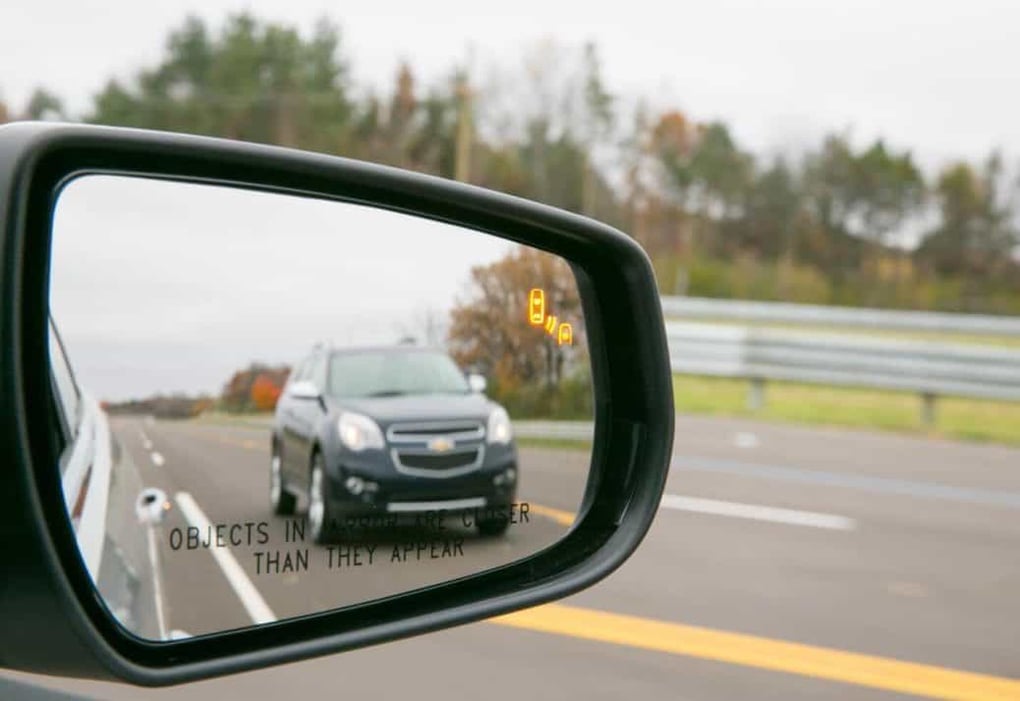Driving and reviewing brand new cars constantly, I get to experience the newest automotive technology, including safety technology. Safety is at the forefront of people's minds who are in the market for a new vehicle. Here is the latest and greatest I have seen:
My Favorites That Should Come Standard On Every Vehicle
There have been a lot of new safety features that I think should be standard on every car sold in America.
- Blind spot monitoring will warn you at a glance if there is a car in the lane next to you, normally with a light in the side mirrors, but some cars audibly warn you as well
- Rear collision warning is another favorite. Sensors search for fixed objects behind you and warn you with a beep that usually gets faster and louder as you get closer to the objects. Unfortunately, too often people get used to hearing it and eventually ignore it, often causing a crash.
- Lane departure warning is normally operated from a camera, usually mounted in the rear view mirror. It measures the distance your car is from the stripes on the road. If you start to cross a line, without your blinker on, the car will warn you. Some cars use an audible warning, some vibrate your seat or steering wheel, and some even correct the steering for you. In this world of distracted driving, this is an outstanding option.
- Forward collision warning alerts you to an impending crash. Your car uses radar or lasers to give you an urgent warning that you are coming up on something too fast, and it will give you quite a scare. Your first inclination is to hit the brakes, which is what it is intended to do.
- Head-up display is one of my favorites. It puts information up on your windshield that can vary, but mainly it will give you your speed, but others give you directions if you have set your navigation system set for a destination. I've been in cars that also show you how many miles to empty, what the outside temperature is, and what radio station you are listening to. The benefit is you get info you need without taking your eyes off the road.
More Advanced Technology
There have been some new advances over the past few years that have been around for a while but only on more expensive vehicles. Today, they are becoming available in many mainstream vehicles.
- Collision avoidance assistance works much like forward collision warning except the radar used is more sensitive. When the system detects anything that could pose a danger, the car will warn you in a variety of ways, however, if the car determines you are not reacting quickly enough, it will make the maneuver for you. Just be aware that some systems are designed to bring you to a complete stop while others aren't meant to just minimize damage. I have written on this before, click here for my article.
- Adaptive cruise control is a real favorite of people who drive on the highway a lot. Like normal cruise control, you set the speed you want to maintain, then set the system. Adaptive cruise control uses both long- and short-range sensors and cameras to keep you the exact same distance from the vehicle in front of you. If the vehicle in front of you slows down, your vehicle will slow itself down. Your vehicle will work to get you to set speed as long as it can maintain a safe distance. One knock with some of these systems is that vehicles are sometimes slow to accelerate to the desired speed.
- Rearview cameras have been around a long time, but recently they have become more advanced. Now when you put your car in reverse, you may have a 360-degree view calling your attention to anything surrounding the car. Some even offer an overhead view that will let you see if you are parked straight.
Other Features That Are Improving
While automakers want to make their vehicles as safe as possible, there is also a goal to sell more cars by offering the greatest new safety features. Here are some that are in the fairly early stages, but improving and getting less expensive.
- Park assist is especially helpful for those people who do a lot of parallel parking. When you are looking for a parking spot, active your park assist system and the car will begin measuring the distance between parked cars on your right side. When the car finds a spot large enough, it will tell you to stop, then it will tell you to put it in reverse and keep your foot on the brake. When you do, the vehicle will steer itself into the parking place perfectly. I have been in vehicles with MSRPs of under $30,000 that offer this system.
- Pedestrian detection has been around on Volvos for a long time, but now many others offer this system. Again, using radar and lasers, usually at speeds under 20-miles per hour, pedestrians and cyclists are recognized and will warn you to look out. Some systems will stop the vehicle itself, and now some cars will take over and take evasive maneuvers.
- Traffic sign recognition is a cool option that can save you from speeding tickets but could also be a great safety tool. A camera facing forward scans the road ahead and is able to recognize speed limit signs, including school zones. Many vehicles display the posted speed on the driver information center on the dash, while others post the speed limit on the head-up display next to your actual speed.
In Summary
There is simply no doubt that this new safety technology keeps us all safer and it is becoming more affordable. Bear in mind, too, these systems are being developed in anticipation of autonomous or self-driving cars.
When car shopping, pay close attention to the safety systems available on the vehicle you are looking at. It could be a matter of life and death in the event of an accident.
Photo Credit: Chevrolet.

